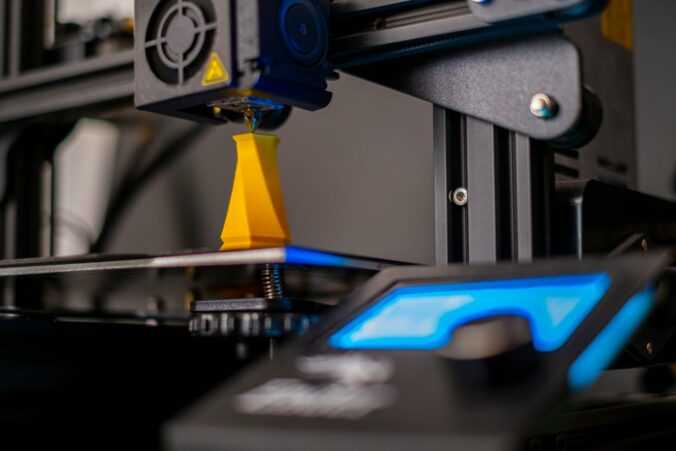This week we learned about and tried 3D design and printing. This week’s class felt more like a lab than our traditional classes, which was a nice change of pace. We met in the digital scholarship commons for a short lesson on some of the practical uses for 3D printing/design in the classroom from two guests, Brittany and Cam. After the short lesson we spent about an hour designing an item on tinkerCAD to be 3D printed, I made a keychain. (Image below, it says “Kenndawg”)

I think 3D printing/design could be a great classroom resource for many subject, especially indigenous language revitalization. If I were to create an indigenous language revitalization tool with 3D printing I would start by getting the proper education I need around the topic to help in a meaningful and indigenous led way. My current idea for this tech would be sourcing buttons that speak when you press down and can be customized. Then I’d use a resource like First Voices to download words and phrases being spoken in my school’s local indigenous language(s) and put those downloads on the buttons. Then I would 3D print the words/phrases and put them on the buttons or if that didn’t work I would try to colour coordinate in some way so students could match up the 3D prints to the correct buttons. I feel like that would be an easy and accessible way for all students to spend time hearing/learning the local indigenous language. My hope with this would mainly be to introduce students to the language and help them start recognizing common words/phrases local school elders/indigenous speakers may use when speaking to a class or assembly. I went to school on the T’Sou-ke First Nation from grade 1 to 12 and was given a lot of great opportunities throughout all stages of my education to learn about our local indigenous history, culture, practices and language. I had many presentations, assemblies, classes, etc. taught by indigenous knowledge holders, elders and teachers who would speak in our local language such as SENĆOŦEN. While I only remember a few words, it’s still more then many students ever get to learn, and me remember a few words years after I have graduated shows the impact that speaking/repeating these languages can have on the efforts to revitalize them.
I think the current negatives of using 3D printers in schools are the cost and safety which are both things that can change over time. I think the possible benefits far outweigh the cons since having access to a 3D printer in the classroom opens the door of lesson opportunities and the ability to create seemingly anything in some way, shape or form. If you are teaching kindies you can 3D print different fine motor skill activities, or teach advanced shapes and angles to middle schoolers. You could help a grade 12 students with their capstone project on 3D printing, the opportunities are endless. I’m not sure if 3D printers have become a common resource in public schools or education system as a whole yet but I hope to see them gain popularity/become more accessible during my career.
Feature photo- Unsplash

Hi Kennedy! I appreciate how you included hyperlinks multiple times, especially on words people may not know. I think that makes it very accessible and engaging. I also agree with you on the various pros on cons. In the future, it would be interesting to see a video or photo included of the 3d printing used in language revitalization, if you were able to find one of course. I really like the feel of your website!
Thanks Shanyce, I really appreciate your feedback!